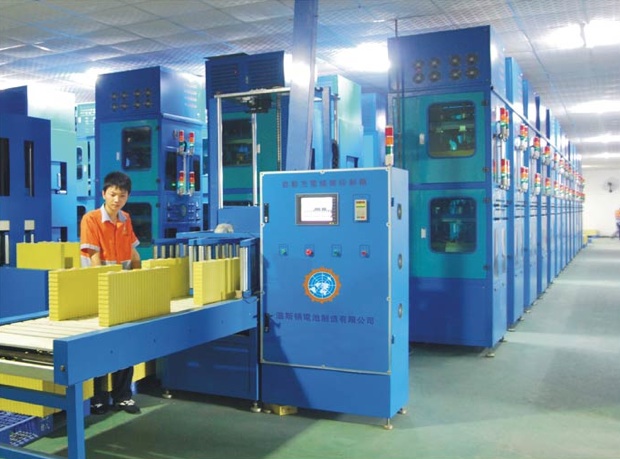'Battery-powered building' runs on equivalent of 1.1 million AA batteries


In order to power the first floor of the newly battery-ified University of California, Riverside’s Bourns College of Engineering, workers installed a 1.1 megawatt bank of high-end lithium-ion batteries. But what does that even mean? Well, given that a the median AA battery contains about 1 watt-hour of electricity, that's the equivalent of 1.1 million AA batteries.*
Which, because I know you're wondering, is almost enough AA batteries to cover the entire bottom of an 50 meter long, Olympic-size swimming pool.
The purpose of all this energy storage? Taking the building off grid by storing energy gathered by a roof-mounted bank of solar panels. Eventually, the school hopes to leverage this initial, $2.5 million donation of batteries from Winston Global Energy CEO Winston Chung to power the entire building.
If the future of cities is solar power, we're going to be seeing a lot more of these kinds of energy storage projects. Right now they're breathtakingly expensive, but the point of rolling them out is that there is just as much efficiency and cost reduction to be learned from actually building these things as there is from innovating new designs for the batteries themselves.
*I'm assuming that press releases claiming that the battery bank is "1.1 megawatts" mean "1.1. megawatt hours," because a bank of batteries capable of delivering 1.1 megawatts of power even for a short amount of time is fairly improbable in this application.
Photo: Winston Energy
More on Smart Cities:
- World’s most expensive burger, grown in lab, costs $345,000
- Is urban air pollution actually a stress-busting narcotic?
- Only place in America more than 100 miles from a McDonald’s [video]
- Documentary: How we missed out on a “limitless” supply of an exotic nuclear power
- Moving documentary of 9/11 evacuation by boat shows resilience of cities
This post was originally published on Smartplanet.com